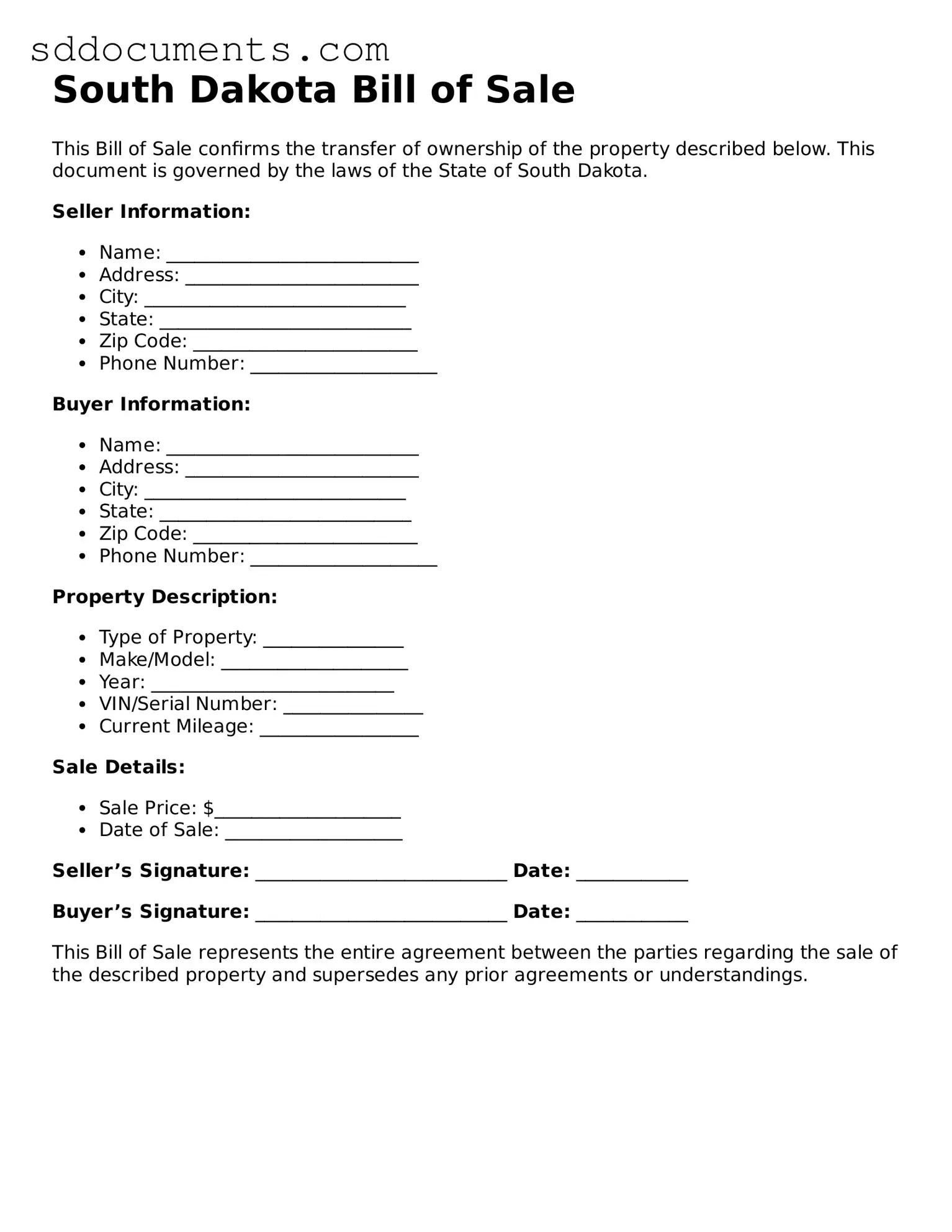Free Bill of Sale Template for South Dakota
A South Dakota Bill of Sale form is a legal document that serves as proof of the transfer of ownership of personal property from one party to another. This form outlines essential details such as the buyer, seller, and a description of the item being sold. To ensure a smooth transaction, fill out the form by clicking the button below.
Customize Document Online
